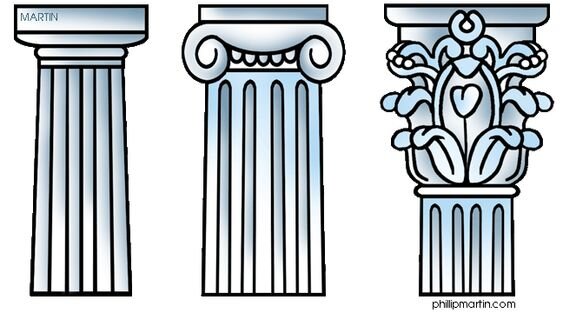Art Lesson w/ Ms. Jennifer: Greek Columns
About the Architecture
You may have seen a lot of images of Federal buildings such as the US Capitol and White House in the news lately. Did you wonder why those buildings look the way they do, and why they all have large marble columns? US government buildings often mimic classical Greek architecture because the US founders admired the ancient democracy of Athens, Greece.
There are three orders or styles of classical Greek columns: The oldest order of Greek columns are the Doric. They are also the simplest and sturdiest. Next came Ionic, with its distinctive scrolls. Last to develop was the Corinthian column, with its elaborate decorations of various plant leaves and rosettes.
Let’s practice drawing a Greek column, and use markers and water to create a marble effect.
Materials:
Images of columns in the style you wish to mimic
Pencil and eraser
Ruler
Thick paper
Permanent marker or black crayon
Washable markers in a few colors
Brush
Dish of water
Watch Ms. Jennifer create her Greek marble columns here
Music by Bensound.com
Instructions:
After deciding on a style of column, begin with your paper vertical. For a Doric column, draw a few lines horizontally near the top of the page. Make small curved lines on the ends to connect the horizontal lines.
For Ionic columns, add two symmetrical scrolls on either side of the top. Use a circle tracer if needed.
For Corinthian columns, add symmetrical leaves going around the top.
Now draw vertical lines along the length of the column, making them farther apart at the center of the column, and closer together to each side, to give the perspective of it being round.
Trace your drawing with a black crayon or Sharpie.
Using washable markers in 2-3 colors, draw some “veins” on the column.
Wash over the veins using clean water on a brush, to make the marker ink “bleed” and spread to look like real marble.



